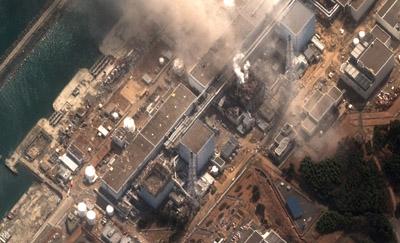Radiation reaches harmful levels in Japan

The origin of radiation is the Fukushima Daiichi nuclear power plant, probably reactor 4. The measurements have therefore shown that the reactor building is cracked (at the moment it has not been officially said to be cracked), that radioactivity has found the way to the outside, against what the most optimistic experts initially thought.
However, the authorities have not waited until today to take measures to protect the health of the population. The eviction of the perimeter of 10 km for yesterday has allowed to expand the evacuation area to 30 km. Only the essential personnel to deal with emergency services have been detained at the plant. In addition, health services have distributed iodine doses to prevent the body from absorbing the radioactive variant.
In the case of Fukushima, two radioactive particles are the most worrying, isotopes iodo-131 and cesio-137. The first emits a beta radiation, that is, the atom releases an electron. The second emits gamma radiation, which means it emits x-rays or gamma rays. Both are ionizing and therefore harmful to health.
If the degree of radiation received is medium, the first symptoms are nausea and discomfort. They occur after several hours of radiation exposure, followed by diarrhea, headache, and fever. Once these symptoms have been overcome, it seems that no harm appears, but the same symptoms can be repeated a few weeks later.
If the degree of radiation is high, the symptoms are much more severe and the damage is visible even in the internal organs. According to experts, a dose of 4 gray is enough to kill half of healthy adults and remember that cancer treatments use doses of 1 to 7 gray, but under control and in restricted area. On the other hand, children are more vulnerable than adults.
In the long term, radioactivity causes mutations in cellular DNA, which significantly increases the risk of developing cancer. The greatest risk occurs from radioactive iodine, which if internalized appears thyroid cancer. In addition, intestinal and gastric cells and the bone marrow from which blood cells come are especially vulnerable.
Also, since radiation can also affect reproductive cells, the effects can spread to the next generations. In fact, in Japan they know it perfectly, II. After the World War, with the malfomations more children were born than normal, the same has happened in the surroundings of Chernobyl.
Radioactivity leakage is not easy. However, the average life of iodine-131 is 8 days; yes, the cesium-137 is 30 years.
Additional information for tracking nuclear accident in Japan and nuclear energy:
About the Japanese accident and nuclear energy
Buletina
Bidali zure helbide elektronikoa eta jaso asteroko buletina zure sarrera-ontzian











